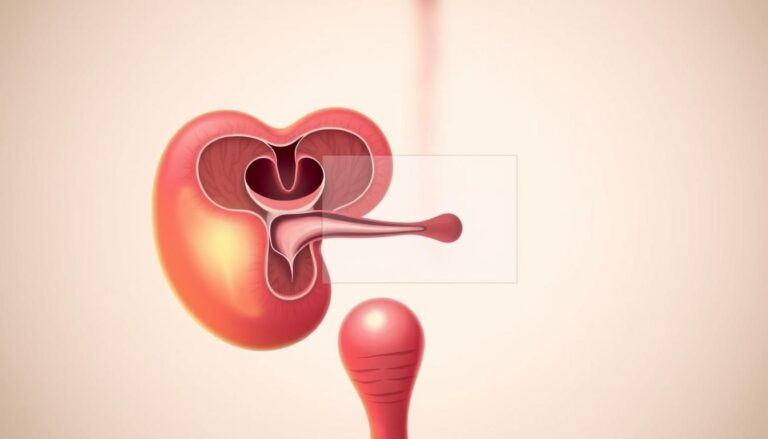Excess abdominal fat is not just a cosmetic concern; it can also have serious implications for overall health, leaving individuals feeling sluggish and tired. As the prevalence of obesity continues to rise, finding effective solutions for weight loss and fitness has become a pressing concern.
One approach that has gained significant attention is the practice of yoga, which has been touted for its potential benefits in weight loss and improving overall fitness. By incorporating specific yoga poses into one’s routine, individuals may be able to target abdominal fat and achieve a healthier, more toned physique.
Key Takeaways
- Yoga can be a valuable tool for weight loss and fitness.
- Certain yoga poses may help target abdominal fat.
- A regular yoga practice can improve overall health and well-being.
- Yoga can help increase flexibility and balance.
- A healthier lifestyle can be achieved through consistent practice.
Understanding Stubborn Belly Fat and Its Health Implications
The accumulation of fat around the abdominal area is not just a cosmetic issue; it has significant health implications. Having a substantial amount of belly fat can make an individual more prone to various illnesses, including diabetes, heart disease, hypertension, and obesity.
Belly fat is not just a matter of aesthetics; it’s a serious health concern that warrants attention. The health risks associated with excess abdominal fat are multifaceted and can have long-term consequences if not addressed.
Why Belly Fat Is Different from Other Body Fat
Belly fat, particularly visceral fat, is more metabolically active than fat stored in other parts of the body. This means it can release inflammatory substances that affect the body’s normal functioning. Visceral fat surrounds vital organs, potentially leading to complications such as insulin resistance and metabolic syndrome.
Unlike subcutaneous fat, which is relatively harmless, visceral fat is located deep within the abdominal cavity and is associated with higher health risks. Understanding this distinction is crucial for addressing the specific challenges posed by belly fat.
Health Risks Associated with Excess Abdominal Fat
Excess abdominal fat is linked to an increased risk of several serious health conditions. These include cardiovascular disease, type 2 diabetes, and certain types of cancer. The presence of visceral fat can lead to chronic inflammation, which in turn contributes to the development of these conditions.
| Health Risk | Description |
|---|---|
| Cardiovascular Disease | Increased risk due to inflammation and metabolic changes associated with visceral fat. |
| Type 2 Diabetes | Visceral fat contributes to insulin resistance, a precursor to type 2 diabetes. |
| Certain Cancers | Chronic inflammation from excess abdominal fat may increase cancer risk. |
Recognizing the health implications of stubborn belly fat is the first step towards mitigating its risks. By understanding why belly fat is different and the associated health risks, individuals can take informed steps towards reducing their abdominal fat and improving their overall health.
How Yoga Helps Target Belly Fat
The practice of yoga offers a holistic approach to reducing stubborn belly fat through various mechanisms. By integrating physical postures, breathing techniques, and meditation, yoga addresses the issue of belly fat from multiple angles.
The Science Behind Yoga and Fat Reduction
Yoga contributes to fat reduction by improving mindfulness, which makes individuals more aware of their eating habits and food choices. This heightened awareness can lead to healthier dietary decisions, ultimately supporting weight loss efforts.
Moreover, certain yoga poses are designed to engage and strengthen the core muscles, thereby toning the abdominal area. Regular practice of these poses can enhance metabolic rate and burn fat more efficiently.
| Yoga Pose | Target Area | Benefits |
|---|---|---|
| Boat Pose (Navasana) | Core muscles | Strengthens abdominal muscles, improves balance |
| Plank Pose (Phalakasana) | Core, arms, and legs | Enhances overall strength, boosts metabolism |
| Twisted Chair Pose (Parivrtta Utkatasana) | Obliques, legs | Tones obliques, improves digestion |
Stress Reduction and Cortisol Management
Yoga is well-known for its stress-reducing benefits. Chronic stress leads to increased levels of cortisol, a hormone that promotes fat storage around the abdominal area. By managing stress through yoga, individuals can lower their cortisol levels, thereby reducing the accumulation of belly fat.

Regular yoga practice has been shown to decrease cortisol levels and improve overall well-being. This reduction in stress not only aids in fat loss but also enhances mental health and resilience.
By incorporating yoga into their routine, individuals can adopt a more balanced lifestyle that supports both physical and mental health, ultimately contributing to effective belly fat reduction.
Preparing Your Body for Yoga Practice
Preparing your body for yoga is a crucial step that can significantly enhance your practice’s effectiveness and safety. Starting your day with yoga can make you feel more flexible and agile, but it’s essential to begin with the right preparation to achieve these benefits.
Essential Warm-Up Exercises
Before starting any yoga practice, engaging in some essential warm-up exercises can help prevent injuries and improve flexibility. These exercises prepare your muscles for the more intense stretches and poses that follow.
- Neck stretches to loosen the neck muscles
- Shoulder rolls to release tension
- Wrist and ankle rotations to improve flexibility
- Leg swings to warm up the legs
Essential Warm-Up Exercises
| Exercise | Repetitions | Benefits |
|---|---|---|
| Neck Stretch | 5 each side | Relaxes neck muscles |
| Shoulder Rolls | 10 rolls | Reduces shoulder tension |
| Wrist Rotations | 5 each direction | Improves wrist flexibility |
Creating the Right Environment for Practice
Creating a conducive environment is vital for a fulfilling yoga practice. This includes choosing a quiet, clean, and clutter-free space that fosters relaxation and focus.
A calm environment can significantly enhance your ability to relax and focus during yoga.
5 Simple Yoga Poses to Reduce Stubborn Belly Fat!
Yoga offers a holistic method for tackling stubborn belly fat by strengthening core muscles and enhancing overall well-being. Certain yoga poses can tone and strengthen the abdominal muscles, improving the overall appearance of the belly area.
Overview of the Selected Poses
The following five yoga poses are specifically chosen for their effectiveness in targeting abdominal fat. These poses are simple, yet powerful, and can be incorporated into a regular yoga practice to enhance fat loss and improve core strength.
- Boat Pose (Navasana)
- Plank Pose (Phalakasana)
- Twisted Chair Pose (Parivrtta Utkatasana)
- Bow Pose (Dhanurasana)
- Wind-Relieving Pose (Pavanamuktasana)
How These Poses Target Abdominal Fat
These yoga poses target abdominal fat by engaging the core muscles, improving digestion, and reducing stress. By incorporating these poses into a regular practice, individuals can experience a reduction in belly fat and an improvement in overall fitness.
| Yoga Pose | Primary Benefit | Secondary Benefit |
|---|---|---|
| Boat Pose (Navasana) | Core Strengthening | Improved Balance |
| Plank Pose (Phalakasana) | Core Engagement | Enhanced Overall Strength |
| Twisted Chair Pose (Parivrtta Utkatasana) | Obliques Strengthening | Improved Digestion |
| Bow Pose (Dhanurasana) | Abdominal Organ Stimulation | Strengthened Back Muscles |
| Wind-Relieving Pose (Pavanamuktasana) | Digestion Improvement | Relief from Bloating |

By practicing these yoga poses regularly, individuals can experience significant improvements in their core strength, digestion, and overall fitness, ultimately leading to a reduction in stubborn belly fat.
Boat Pose (Navasana)
Boat Pose, or Navasana, is a powerful yoga posture known for its ability to strengthen the core and reduce stubborn belly fat. This asana is particularly beneficial as it engages the abdominal muscles, helping to burn fat around the belly area.
Step-by-Step Instructions
To perform Boat Pose correctly, start by sitting on the floor with your legs stretched out in front of you. Lean back slightly and lift your legs off the ground, keeping them straight. Balance on your sitting bones, and extend your arms forward, parallel to the ground. Engage your core and maintain a straight back. Hold this position for a few breaths, gradually increasing the duration as you build strength and endurance.
Modifications for Beginners
For those new to Boat Pose, a modification involves bending the knees and keeping the feet on the ground. This reduces the intensity on the core while still engaging the abdominal muscles. As you become more comfortable, you can progress to the full pose by straightening your legs and lifting them off the ground.
Benefits for Core Strength and Belly Fat
Boat Pose is highly effective for strengthening the core muscles, which include the abdominals and the muscles around the spine. By engaging these muscles, Navasana helps in burning belly fat and toning the abdominal area. Regular practice of Boat Pose can lead to a stronger, more stable core and a reduction in stubborn belly fat.
The practice of Navasana also improves balance and posture, contributing to overall physical fitness and well-being. By incorporating Boat Pose into your yoga routine, you can enhance your core strength, reduce belly fat, and enjoy the numerous other benefits that this powerful asana has to offer.
Plank Pose (Phalakasana)
Phalakasana, commonly known as Plank Pose, is a powerful yoga posture that targets the abdominal muscles and enhances overall core strength. This foundational asana is crucial in many yoga practices for its ability to engage multiple muscle groups simultaneously.
Step-by-Step Instructions
To perform Plank Pose correctly, follow these steps:
- Start in a high push-up position with your hands shoulder-width apart.
- Ensure your fingers are spread wide and your palms are pressing firmly into the ground.
- Engage your arm muscles and maintain a straight line from head to heels.
- Activate your core by drawing your navel towards your spine.
- Hold the position for 30-60 seconds, breathing steadily.

Variations to Increase Intensity
To challenge yourself further, you can modify Plank Pose in several ways:
| Variation | Description | Benefit |
|---|---|---|
| Side Plank | Rotate your body to one side, stacking your feet and supporting yourself on one hand. | Targets obliques and improves balance. |
| Plank with Leg Lift | Lift one leg off the ground, keeping it straight. | Engages core and improves stability. |
| Inverted Plank | Support your body on your hands and heels, with your hips lifted. | Stretches the front of the body and strengthens the back. |
How Plank Targets Abdominal Muscles
Plank Pose effectively engages the abdominal muscles, including the rectus abdominis and the transverse abdominis. By maintaining a straight line from head to heels, you activate these muscles to support your body’s posture. Regular practice of Plank Pose can lead to improved core strength, better posture, and a reduction in belly fat.
The engagement of the core during Plank Pose also helps in stabilizing the body and improving overall physical stability. This makes it an essential asana for athletes and individuals looking to enhance their physical performance.
Twisted Chair Pose (Parivrtta Utkatasana)
The Twisted Chair Pose is a challenging yet beneficial yoga posture that can help reduce stubborn belly fat and enhance overall core strength. This pose combines elements of twisting and bending, which can be particularly effective in targeting the abdominal region.
Step-by-Step Instructions
To perform Twisted Chair Pose correctly, follow these steps:
- Begin by standing with your feet hip-width apart.
- Lower your hips into a chair-like position, keeping your weight in your heels.
- Stretch your arms out to the sides at shoulder height.
- Twist your torso to the right, bringing your left elbow to the outside of your right knee.
- Keep your spine long and your core engaged.
- Hold the pose for a few breaths, then repeat on the other side.
Common Mistakes to Avoid
When practicing Twisted Chair Pose, it’s essential to avoid certain common mistakes to maximize the benefits and minimize the risk of injury.
- Allowing the knees to extend past the toes.
- Twisting from the wrong part of the spine.
- Not engaging the core muscles.
Benefits for Obliques and Digestion
Twisted Chair Pose offers several benefits, particularly for the obliques and digestion.
Key Benefits:
| Benefit | Description |
|---|---|
| Strengthens Obliques | The twisting motion in Parivrtta Utkatasana effectively targets the oblique muscles, helping to tone and strengthen them. |
| Improves Digestion | The pose stimulates the abdominal organs, which can help improve digestion and relieve symptoms of indigestion. |
| Enhances Core Strength | By engaging the core muscles, Twisted Chair Pose contributes to overall core strength and stability. |
Incorporating Twisted Chair Pose into your regular yoga practice can lead to significant improvements in both the strength of your obliques and your digestive health. As with any yoga pose, it’s crucial to practice it mindfully and within your personal limits.
Bow Pose (Dhanurasana)
Bow Pose, or Dhanurasana, is a powerful yoga posture known for its ability to strengthen abdominal muscles and stimulate digestion. This asana is particularly beneficial for individuals looking to reduce stubborn belly fat and improve their overall core strength.
Step-by-Step Instructions
To practice Bow Pose, start by lying on your stomach with your feet hip-width apart. Bend your knees and reach back to hold your ankles with your hands. On an inhale, lift your chest and legs off the ground, keeping your knees in line with your hips. Keep your gaze forward and hold the pose for a few breaths. To release, slowly lower your legs and chest back down to the ground.

Modifications for Different Fitness Levels
For beginners, it’s advisable to start with a modified version of Bow Pose by lifting just the chest or legs slightly off the ground. As flexibility and strength improve, you can gradually move into the full expression of the pose. For more advanced practitioners, deepening the stretch by pulling the ankles closer to the body can enhance the benefits.
How Bow Pose Stimulates Abdominal Organs
Bow Pose is known to massage and tone the digestive organs, including the pancreas and liver, thereby improving digestion and metabolism. The gentle compression and release in the abdominal region stimulate these organs, promoting better functioning and contributing to the reduction of belly fat.
| Benefits of Bow Pose | Description |
|---|---|
| Strengthens Abdominal Muscles | Engages and tones the core muscles, improving overall core strength. |
| Stimulates Digestion | Massages and tones digestive organs like the pancreas and liver, enhancing digestion and metabolism. |
| Reduces Belly Fat | Contributes to fat loss around the abdominal area by improving metabolism and digestion. |
Wind-Relieving Pose (Pavanamuktasana)
Pavanamuktasana, commonly known as the Wind-Relieving Pose, is a foundational yoga pose designed to release trapped gas in the digestive system, promoting better digestion and comfort. This pose is particularly beneficial for individuals who experience discomfort due to gas and bloating.
Step-by-Step Instructions
To practice the Wind-Relieving Pose, start by lying on your back with your arms alongside your body. Bring your knees towards your chest and clasp your hands around them. Gently rock back and forth, massaging your lower back and releasing tension in the abdominal region. Ensure your movements are smooth and controlled.
Breathing Techniques During the Pose
While performing Pavanamuktasana, focus on deep, rhythmic breathing. Inhale deeply through your nose, allowing your belly to expand, and then exhale slowly, feeling your abdomen contract. This coordinated breathing enhances the pose’s effectiveness in relieving gas and promoting relaxation.
Benefits for Digestion and Detoxification
The Wind-Relieving Pose offers several benefits for digestive health. By releasing trapped gas, it helps alleviate bloating and discomfort. Additionally, the gentle compression and release of the abdominal region can stimulate digestive organs, potentially improving digestion and aiding in detoxification. Regular practice of Pavanamuktasana can contribute to a healthier digestive system and overall well-being.
Key benefits of Pavanamuktasana include:
- Relief from gas and bloating
- Improved digestion
- Enhanced detoxification
- Reduced abdominal discomfort
Complementary Lifestyle Factors for Belly Fat Reduction
A holistic approach to weight loss involves not just physical activity, but also dietary changes and improved sleep quality. While yoga can help target belly fat, complementary lifestyle factors play a significant role in achieving and maintaining weight loss.
Dietary Considerations
Diet is a crucial factor in belly fat reduction. Consuming a wholesome diet rich in fruits, vegetables, whole grains, and lean proteins can significantly aid in weight loss. It’s equally important to limit or avoid sugary foods and beverages, processed foods, and saturated fats.
Nutritional Tips for Belly Fat Reduction:
- Incorporate fiber-rich foods to improve digestion and satiety.
- Choose healthy fats like avocados, nuts, and olive oil.
- Stay hydrated by drinking plenty of water throughout the day.
- Limit intake of refined carbohydrates and sugary snacks.
| Food Category | Recommended Foods | Foods to Avoid |
|---|---|---|
| Fruits and Vegetables | Leafy greens, berries, citrus fruits | Fruit juices with added sugars |
| Proteins | Lean meats, fish, eggs, legumes | Processed meats, high-fat dairy |
| Grains | Whole grains like quinoa, brown rice | Refined grains like white bread, pasta |
Sleep Quality and Belly Fat
Sleep quality is another critical factor that influences belly fat reduction. Poor sleep can disrupt hormones that regulate hunger and fullness, leading to weight gain. Ensuring adequate sleep and maintaining a consistent sleep schedule can support weight loss efforts.
Tips for Improving Sleep Quality:
- Establish a relaxing bedtime routine to signal the body that it’s time to sleep.
- Create a sleep-conducive environment by keeping the bedroom cool, dark, and quiet.
- Avoid caffeine and electronic screens before bedtime.

Creating a Consistent Yoga Routine for Maximum Results
Establishing a consistent yoga routine is crucial for achieving maximum results in reducing stubborn belly fat. Practicing yoga three times a week can contribute to weight loss, especially when integrated into a broader healthy lifestyle.
To create an effective yoga routine, it’s essential to start with a manageable schedule and gradually increase the frequency and intensity. This approach helps in maintaining consistency, which is key to experiencing significant improvements in weight loss and overall fitness.
Sample Weekly Practice Schedule
A sample weekly practice schedule can help you plan your yoga routine. For example, you can start with three days a week, focusing on different aspects of yoga such as:
- Monday: Focus on core strength with poses like Boat Pose and Plank Pose.
- Wednesday: Emphasize flexibility and relaxation with gentle flows and restorative yoga.
- Friday: Incorporate more dynamic sequences to boost metabolism and energy.
Combining Yoga with Other Exercise Forms
Combining yoga with other forms of exercise can enhance your fitness program and accelerate weight loss. Consider incorporating cardio activities like jogging or cycling, and strength training exercises to build muscle and boost metabolism.
By integrating yoga into your overall physical activity, you can experience improved flexibility, balance, and core strength, which are essential for effective weight management.
Conclusion
Yoga, when combined with a healthy diet and lifestyle, can be a powerful tool in managing weight and reducing belly fat. The five simple yoga poses discussed in this article – Boat Pose, Plank Pose, Twisted Chair Pose, Bow Pose, and Wind-Relieving Pose – target the abdominal muscles, improve digestion, and promote overall health.
Regular practice of these poses can help reduce stubborn belly fat, improve core strength, and enhance overall well-being. By incorporating yoga into your daily routine, you can take a significant step towards achieving a healthier and more balanced lifestyle.
A consistent yoga practice, combined with a balanced diet and healthy lifestyle, can lead to sustainable weight loss and improved overall health. By adopting this holistic approach, individuals can effectively manage belly fat and reduce the risk of associated health problems.
FAQ
Can yoga alone help reduce stubborn belly fat?
While yoga is beneficial for overall health and can aid in weight loss, combining it with a balanced diet and other forms of physical activity can enhance its effectiveness in reducing belly fat.
How often should I practice yoga to see results in belly fat reduction?
Consistency is key. Practicing yoga at least three to four times a week, alongside a healthy lifestyle, can help in achieving noticeable results over time.
Are there specific yoga poses that are more effective for burning belly fat?
Poses that engage the core, such as Boat Pose, Plank Pose, and Twisted Chair Pose, are particularly effective in targeting abdominal muscles and aiding in belly fat reduction.
Can yoga help reduce stress, which is a factor in belly fat accumulation?
Yes, yoga is well-documented to reduce stress levels by promoting relaxation and lowering cortisol levels, thereby helping to mitigate one of the factors that contribute to belly fat.
Is it necessary to combine yoga with other forms of exercise for weight loss?
Combining yoga with other forms of exercise, such as cardiovascular activities, can enhance calorie burn and muscle mass development, contributing to more effective weight loss and belly fat reduction.
Can pregnant women practice yoga to reduce belly fat?
Pregnant women can benefit from prenatal yoga, which is tailored to their needs and safety. However, it’s crucial to consult with a healthcare provider before starting or continuing any exercise regimen during pregnancy.
How does diet impact the effectiveness of yoga in reducing belly fat?
A balanced diet that is low in processed foods and sugars and high in nutrients supports weight loss and fat reduction efforts. Yoga, when combined with healthy eating habits, can be more effective in reducing belly fat.
Can yoga improve digestion and help with detoxification?
Yes, certain yoga poses, such as Wind-Relieving Pose and Bow Pose, can stimulate abdominal organs, improve digestion, and aid in detoxification, contributing to overall health and potentially supporting belly fat reduction.
How does sleep quality affect belly fat and weight loss efforts?
Poor sleep quality can disrupt hormones that regulate hunger and fullness, leading to weight gain and increased belly fat. Adequate sleep is essential for supporting weight loss and overall health.
Can yoga and Pilates be combined for better results in reducing belly fat?
Yes, combining yoga with Pilates can offer a comprehensive core workout, enhancing strength, flexibility, and potentially improving results in belly fat reduction when paired with a healthy lifestyle.





